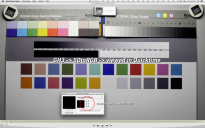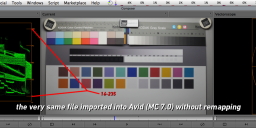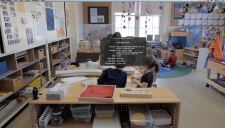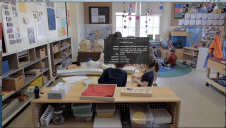
-
can you give me a pointer to the respective thread ... I don't know it.
Thanks in advance!
-
You're not supposed to be transcoding to full range.
This is essentially not correct... the contrary… as long as you are referring to 5DtoRGB's setting called "fullrange".
In 5DtoRGB the setting "fullrange" means: "preserve the full luminance levels contained in the source file". In other words: "do not remap luminance levels".
When the source file contains fullswing levels 5DtoRGB's setting "fullrange" will output a file containing fullswing levels. When the source file contains studioswing levels 5DtoRGB's setting "fullswing" will do exactly the same - it preserves the full range of luminance levels contained in the source file. BUT: studioswing utilzes luminance levels from 16-235 (8bit naming) for image content. However, broadcast-safe colors ("studioswing") also contain luminance levels from 0-15 and 236-255. These levels are not utilized for image content but are preserved for footroom and headroom (so while not utilized for image content these levels are still present in the file - note that Rec709 technically always contains 0-255 luminance levels).
Therefore 5DtoRGB's setting "fullrange" essentially will output files from the GH2 and the GH3 that look "dull" on a computer screen when viewed in appropriate software (but they look absolutely correct on a TV-screen). Of course, if you transcode to ProRes-QT the files contain tags assigned for viewing purposes on a computer screen - in effect the files look like "fullswing" in Quicktime (also in the interface of most other video-viewing-softwares designed for computers… for instance VLC, Movist etc. - and AFAIK this applies also to FCP7 / FCPx since these softwares are based on Quicktime). But this is just an "issue" of the respective viewing-softwares. When you view the respective files in a professional video editing software and open the Y-waveform-monitor you will see that the actual image content lives within 16-235 (see attachments).
So... again: using the "fullrange" setting in 5DtoRGB will preserve the full range of luminance levels contained in the source file!
In other words: this (and only this) setting will achieve a "lossless" transcode to ProRes.
You can remap broadcast safe levels from 16-235 to 0-255 when you set the setting to "broadcast". But the transcode remaps in 10bit. I feel much better to preserve the luminance levels of the source files and remap to fullswing (or whatever...) in the editing software in 16bit (or 32bit). Therefore I always set 5DtoRGB to "fullrange" (= "preserve the original luminance levels of the source file" = "no remapping").

 gh3_5DtoRGB_QTviewing_levels.png1920 x 1200 - 794K
gh3_5DtoRGB_QTviewing_levels.png1920 x 1200 - 794K
 gh3_5DtoRGB_source_levels.png1920 x 471 - 520K
gh3_5DtoRGB_source_levels.png1920 x 471 - 520K -
Thank you!
-
Thanks. I've read many different posts all over the net so I'm a bit confused what's best. Some mention the benefits of full range other are against.
I might go with Broadcast Range, just to be safe. But, I would still like to find out why GH3 files are not giving me flat image, like GH2. For my information, at least.
Thanks again
-
These are screenshots of the original GH2 mts file and transcoded file. There is a huge difference. So, the software does give flatter image with GH2 but not with GH3.
EDIT: I just noticed that I named the screenshots incorrectly. Files names should be reverse, but you can see the difference anyway: flatter image is the transcoded one.

 gh2.png1749 x 969 - 3M
gh2.png1749 x 969 - 3M
 gh2transcoded.png1703 x 955 - 3M
gh2transcoded.png1703 x 955 - 3M -
I'm attaching the screenshots of the original and transcoded 422HQ files.

 original.png1719 x 977 - 3M
original.png1719 x 977 - 3M
 transcoded422hq.png1745 x 988 - 3M
transcoded422hq.png1745 x 988 - 3M
Howdy, Stranger!
It looks like you're new here. If you want to get involved, click one of these buttons!
Categories
- Topics List23,993
- Blog5,725
- General and News1,354
- Hacks and Patches1,153
- ↳ Top Settings33
- ↳ Beginners256
- ↳ Archives402
- ↳ Hacks News and Development56
- Cameras2,368
- ↳ Panasonic995
- ↳ Canon118
- ↳ Sony156
- ↳ Nikon96
- ↳ Pentax and Samsung70
- ↳ Olympus and Fujifilm102
- ↳ Compacts and Camcorders300
- ↳ Smartphones for video97
- ↳ Pro Video Cameras191
- ↳ BlackMagic and other raw cameras116
- Skill1,960
- ↳ Business and distribution66
- ↳ Preparation, scripts and legal38
- ↳ Art149
- ↳ Import, Convert, Exporting291
- ↳ Editors191
- ↳ Effects and stunts115
- ↳ Color grading197
- ↳ Sound and Music280
- ↳ Lighting96
- ↳ Software and storage tips266
- Gear5,420
- ↳ Filters, Adapters, Matte boxes344
- ↳ Lenses1,582
- ↳ Follow focus and gears93
- ↳ Sound499
- ↳ Lighting gear314
- ↳ Camera movement230
- ↳ Gimbals and copters302
- ↳ Rigs and related stuff273
- ↳ Power solutions83
- ↳ Monitors and viewfinders340
- ↳ Tripods and fluid heads139
- ↳ Storage286
- ↳ Computers and studio gear560
- ↳ VR and 3D248
- Showcase1,859
- Marketplace2,834
- Offtopic1,320
Tags in Topic
- gh3 337
- 5dtorgb 10
- transcoding 1





